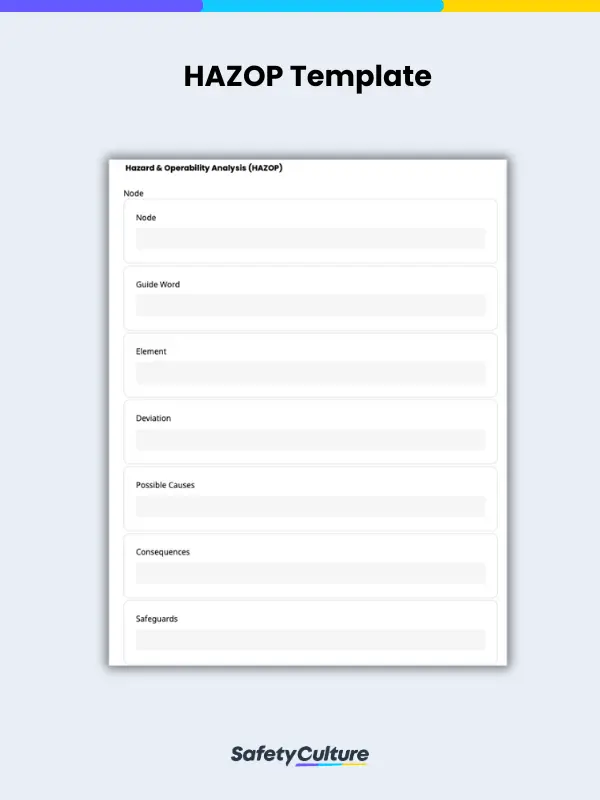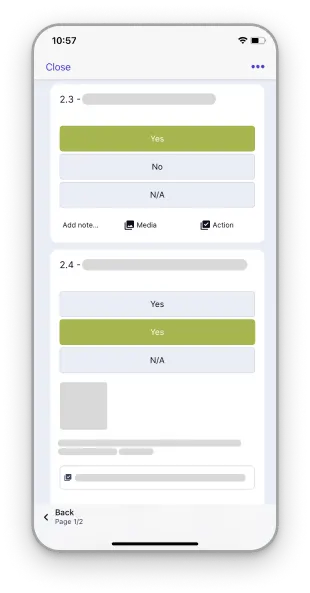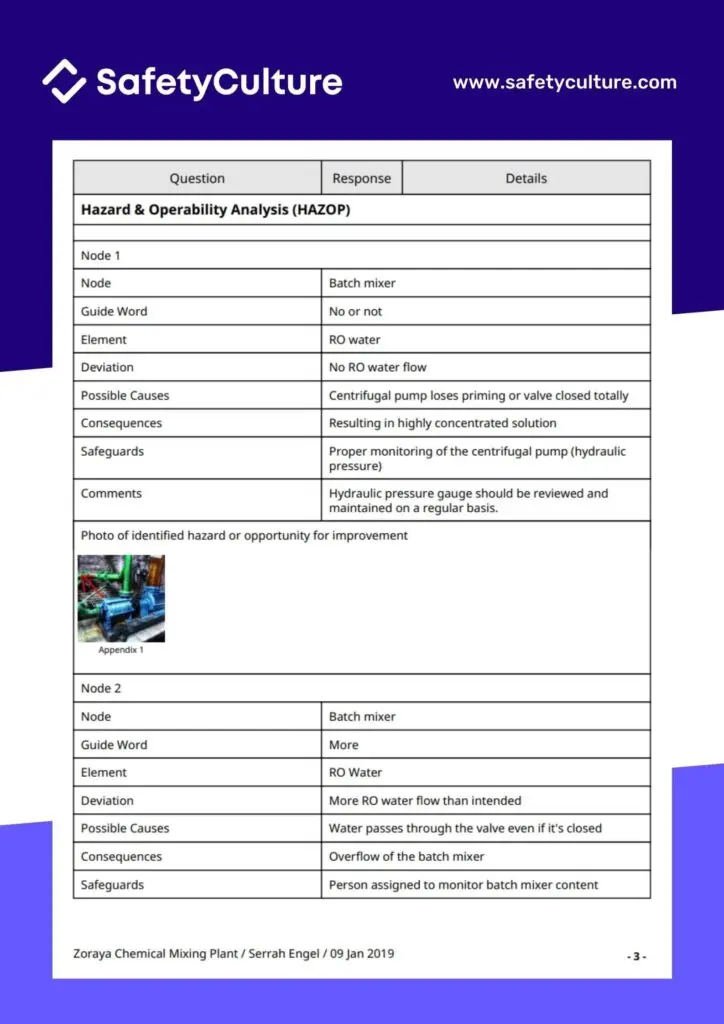What is HAZOP?
Hazard and Operability (HAZOP) is a risk management technique used to identify potential hazards and functional flaws in existing or planned plant systems. HAZOP, also known as a HAZOP study or HAZOP analysis, is primarily used to explore complex operational hazards and functions in chemical processing plants and in nuclear, water, sewage, and treatment plants.
The Purpose of HAZOP
Since HAZOP is based on the assumption that hazards happen because elements of design and operation can deviate from their original intention, its purpose is to reduce risk and ensure the safety of workers in plant environments.
What is a HAZOP Study?
A HAZOP study, or HAZOPS, is performed by an interdisciplinary team of experts including engineers, chemists, facilities managers, and safety officers to identify procedural risks, process hazards, and design flaws.
They discuss possible deviations and come up with different scenarios where the system or process could fail. The team can then propose recommendations for safeguards and improvements to lower the risk of identified hazards and operational failures from occurring.
How to Perform a HAZOP Study
A HAZOP study primarily assesses the following three parts of a plant function:
- Step #1: Design
To assess the design’s capability to fulfill its intended function and identify its weaknesses e.g. the composition of the chemical batch reactor. - Step #2: Physical Environment
To assess the environment where the system or design will operate and ensure that it is ideal e.g. is there enough space for the chemical batch reactor to operate as intended? - Step #3: Procedure
To assess the engineered controls such as automation, sequence of steps, human interactions e.g. the steps in producing the target chemical concentration.
HAZOP Example
Here is an example of how a HAZOP can be used by an expert team to assess the procedure involved in chemical production:
Setting: Chemical Mixing Plant
Objective: To produce a batch of 10% concentration HCl (Hydrochloric acid)
Steps:
- Reverse Osmosis (RO) water is added to the batch mixer via a centrifugal pump
- Additives are mixed with the RO water
- A 33% solution of HCl is added to the mixture of RO water and additives, resulting in a 10% concentration of HCl
Guide word/Scenario: No RO water added.
Possible cause(s): Centrifugal pump loses priming or valve closed totally.
Consequence(s): Solution will be highly concentrated.
Safeguard(s): Proper monitoring of the centrifugal pump (hydraulic pressure).
Comments: Hydraulic pressure gauges should be reviewed and maintained on a regular basis.
Recommendation(s): Review and do maintenance work on the hydraulic pressure gauge of the centrifugal pump.
Hazard and Operability Guide Words
After identifying the objective and steps involved in the procedure, the team will then explore different scenarios where the procedure could deviate from its intended function.
A HAZOP study encourages the use of “guide words” to help explore all potential deviations. Here is an example of how the team could use common guide words to explore deviations involving the input and mixture of RO water:
- No or not (Design intent negated completely) – No RO water added
- More (Quantitative increase) – RO water added is more than intended
- Less (Quantitative decrease) – RO water added is less than intended
- As well as (Qualitative modification/increase) – RO water mixed with UV water is added
- Part of (Qualitative modification/decrease) – Tap water is added instead of RO water
- Reverse (Logical opposite of design intent) – RO water is omitted from the mixture
- Other than (Complete substitution) – UF water is used instead of RO water
- Early (Relative to the clock time) – RO water is added too early
- Late (Relative to the clock time) – RO water is added too late
- Before (Relating to order or sequence) – RO water is added before the additives and 33% HCl are ready
- After (Relating to order or sequence) – RO water is added after the additives and 33% HCl
In the first scenario where “No RO water is added” the team will deliberate and identify the possible causes, consequences, safeguards and ultimately provide a recommendation.




